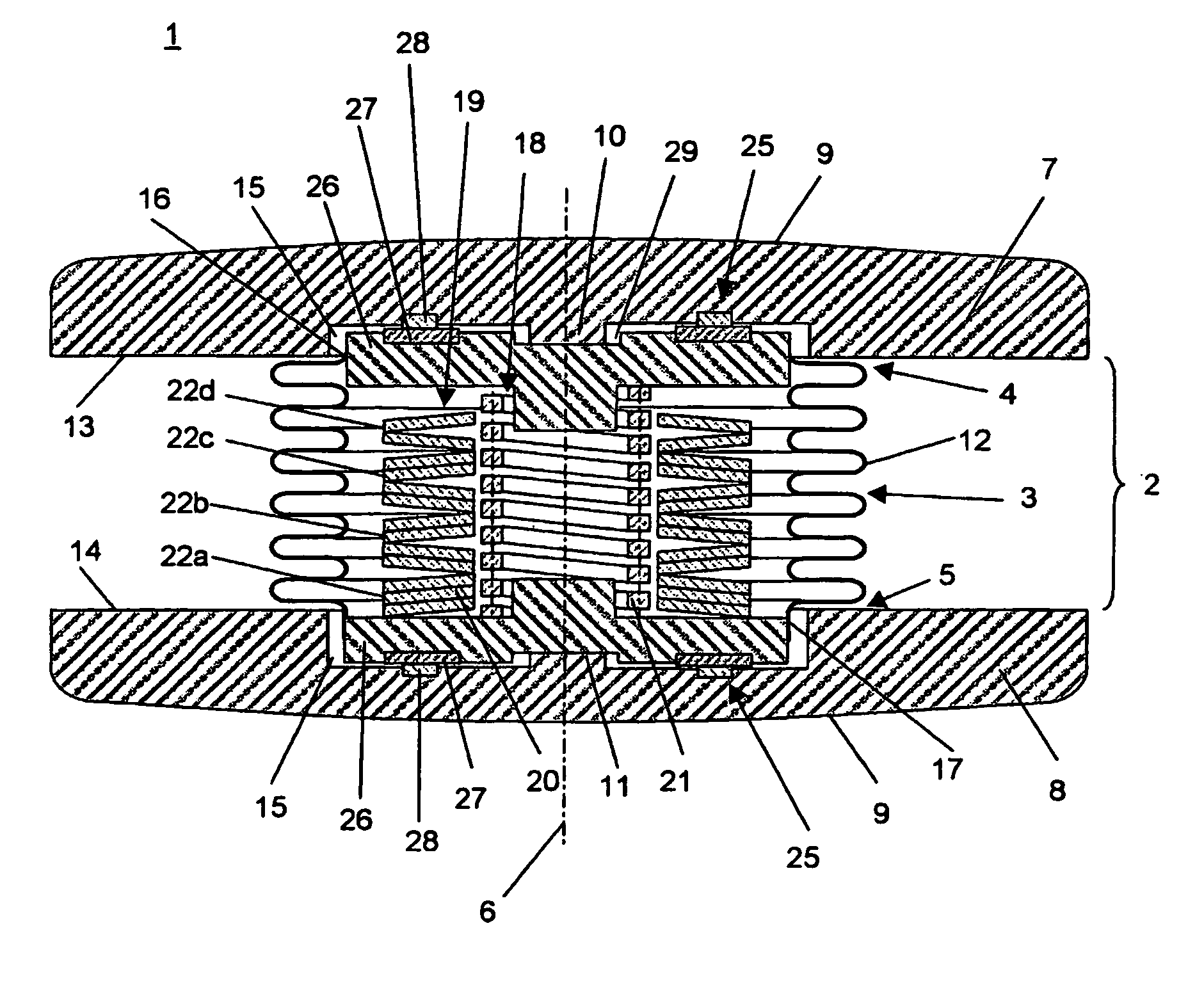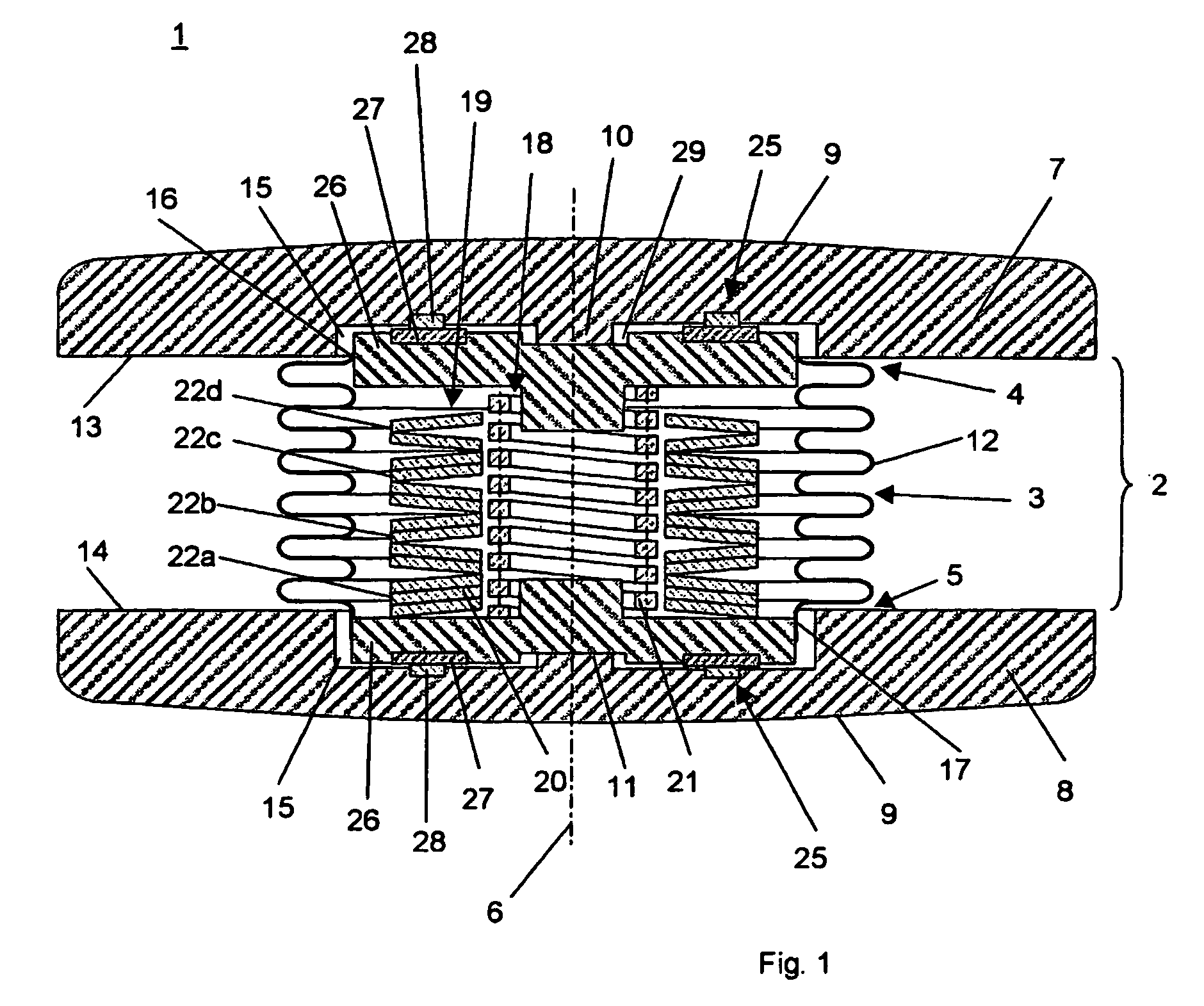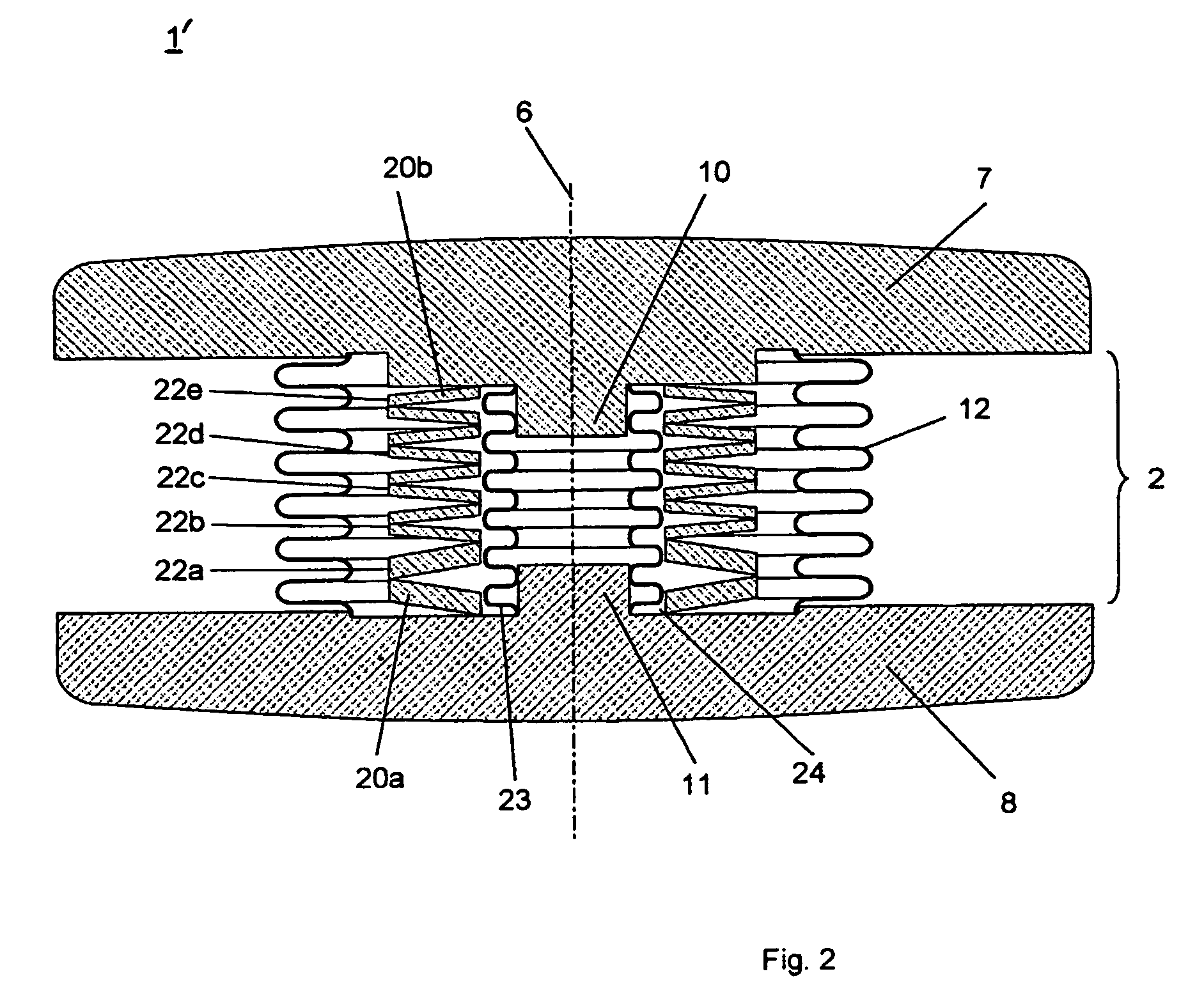Intervertebral disk prosthesis or artificial vertebral body
a technology of intervertebral disks and prostheses, which is applied in the field of prosthetic intervertebral disks or artificial vertebrae, can solve the problems of limited freedom of movement of the spinal column, low flexibility of the compression spring element, etc., and achieve the effect of low stiffness
- Summary
- Abstract
- Description
- Claims
- Application Information
AI Technical Summary
Benefits of technology
Problems solved by technology
Method used
Image
Examples
Embodiment Construction
[0026]The embodiment of the prosthetic intervertebral disk 1 illustrated in FIG. 1 comprises a hollow cylindrical elastic middle part 2 having a jacket 3 designed as bellows 21, an upper end 4, a lower end 5, a central longitudinal axis 6, an upper apposition plate 7, and a lower apposition plate 8. Upper apposition plate 7 is arranged across longitudinal axis 6 at upper end 4 of middle part 2 and is suitable for coming in contact with the lower plate of a vertebra. Lower apposition plate 8 is arranged across longitudinal axis 6 at lower end 5 of middle part 2 and is suitable for coming in contact with the upper plate of a vertebra. The two apposition plates 7; 8 have a surface 9 with a convex curvature and axial pins 10 and 11 pointing inward. The jacket 3 in this embodiment includes bellows 12, which are attached to the two apposition plates 7; 8. Depending on the material, the bellows 12 may be welded, glued, or pressed to apposition plates 7; 8.
[0027]Upper apposition plate 7 has...
PUM
 Login to View More
Login to View More Abstract
Description
Claims
Application Information
 Login to View More
Login to View More - R&D
- Intellectual Property
- Life Sciences
- Materials
- Tech Scout
- Unparalleled Data Quality
- Higher Quality Content
- 60% Fewer Hallucinations
Browse by: Latest US Patents, China's latest patents, Technical Efficacy Thesaurus, Application Domain, Technology Topic, Popular Technical Reports.
© 2025 PatSnap. All rights reserved.Legal|Privacy policy|Modern Slavery Act Transparency Statement|Sitemap|About US| Contact US: help@patsnap.com



